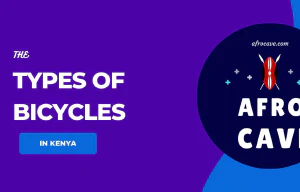Role of the Government in the COVID-19 Vaccine Distribution
- Author Gĩthĩnji
- Updated on:
It is upon the government of Kenya to ensure fair and equitable access to COVID-19 vaccines to its citizens, and also that every county receives them and rolls them out to everyone, especially the most vulnerable in the society. The role of the government in the process of distributing the vaccines to combat the Coronavirus pandemic cannot be downplayed.
The government should have the resources that should help the distribution of the vaccine to reach every citizen in every corner of the country. In a country with an estimated population of 55 million by the coming year, at least a majority of the population must get vaccinated against the COVID-19 virus. However, this has largely been the opposite.
Data shows that Kenya has received about 7.5 million doses of various COVID-19 vaccines but only about 4.5 million of the population have received at least one dose (by October 15th 2021). By the same date, the cumulative number of COVID-19 cases in the country was around 251.7 thousand with 5,233 COVID-19 deaths.
The common vaccines in the country are AstraZeneca, Moderna, Johnson & Johnson, and Pfizer. There was also the Russian variant called Sputnik V when the vaccination drive began. Most of these vaccines are donations from developed countries such as the USA, Canada, UK, or as part of the COVAX facility, a global initiative working with governments and manufacturers to ensure COVID-19 vaccines are available worldwide to both higher-income and lower-income countries.
Other vaccines have been purchased through the Africa Vaccine Acquisition Trust Mechanism (AVAT).
Initially, as per the Kenyan government guidelines, the COVID-19 vaccine was available for phase 1 groups as follows:
- healthcare workers & support staff in health facilities;
- persons aged 58 years and above;
- teaching & non-teaching staff in educational institutions;
- uniformed forces (police, military, and other security personnel); and
- leaders in religious institutions.
Phase 2 was for persons aged 50 years and above and those with underlying serious illness, and tourism workers. Phase 3 is for the rest of the population (that is, everyone else). Currently, the vaccination process is open to everyone over the age of majority and with an identification Card (or Passport).
Table of ContentsShow/Hide
Role of the government in the distribution of vaccines
The government has also recently lifted the night curfew restrictions that have been in place for months. The President said infection rates have fallen with less than 5% of tests each day proving positive.
It is now time to shift our focus from survival to co-existing with the disease…
There are also plans to unveil a COVID-19 vaccine facility in the country by early next year.
Therefore, the role the government has to play in the distribution of the COVID-19 Vaccine is undeniable and it can achieve this role in several ways.
1. Planning for the distribution of the vaccine
The planning process could involve the government determining how many people receive a shot of the COVID-19 vaccine and the phases in the vaccine that will be distributed and administered. It is also vital to have a certification process for the vaccines in place and technology to make this process efficient.
A good planning process for the distribution of the vaccine should take into consideration such things as supply chain management, safety, security, mobility and data sharing plans of the vaccine.
There should be proper coordination between different government agencies engaged in handling and distributing the vaccine. This is where critical information architecture comes in. In addition to an efficient plan for data keeping and tracking, there is a critical need to set up achievable goals regarding vaccination numbers and scope.
The government should be forefront in the development of national vaccination plans, support for cold chain infrastructure, as well as stockpiling of syringes and safety boxes for their disposal, masks, gloves and other equipment to ensure health workers have enough equipment to roll out and sustain the vaccine distribution and administration process.
All this effort will ensure the vaccine distribution process between the government and the recipients (citizens) flows smoothly.
2. Deploying the Vaccine
To ensure the vaccine reaches every part of the country, the government has to ensure that there are effective and efficient deployment plans for the vaccine. This was first made easier through the different phases of vaccine administration beginning with the essential workforce and the vulnerable in the society and ending with the rest of the population.
A good vaccine deployment plan helps reduce risk and avoid waste in financial and other resources, especially where the government is handling hundreds of thousands of vaccines, the cold storage architecture and the hundreds of thousands of syringes.
The government should deploy the vaccines to regional distribution centres from where the counties can collect their doses and distribute them to the hospitals, clinics and health centres in the grassroots. It should also nominate the health centres to receive these vaccines depending on their capacity to deploy the vaccines to the masses.
National referral hospitals, county referral hospitals, local government health centres and selected private facilities could play a vital role in the collection, deployment and administration of the vaccines. A successful deployment is dependent on the successful planning of the vaccine distribution process.
3. Raising awareness on the vaccine
The government should prioritise a communication campaign that aims to increase the awareness of the vaccination campaign, more so to increase trust in the COVID-19 vaccine. An effective awareness campaign should help counteract the myths and misconceptions surrounding the vaccine and encourage the public to take the vaccine when it becomes available to them.
The campaign should also aim to strengthen other measures already in place to combat the epidemic, such as wearing masks, sanitising and keeping social distance and avoiding crowded gatherings and settings.
The awareness campaign should provide visibility to the public on how the vaccination rollout is progressing. The government should exert the same effort in the vaccine awareness campaign just as on reporting deaths and infections from the disease. This is where the data sharing architecture plays a huge role.
Every health facility that is administering the vaccines must keep data that will enable the government to track and publicise data on vaccination.
For the economy to open up and rebuild, people need information proving that the vaccine is safe and there are efforts to achieve critical mass on the vaccinations. This will give the people the confidence to venture out of their homes and do the activities they normally do before the pandemic.
4. Securing the vaccine
According to WHO, the successful implementation of COVID-19 vaccination programmes will require robust supply systems. Such systems will need to ensure effective vaccine storage, handling and stock management; rigorous temperature controls in the supply chain; and the maintenance of adequate logistics management information systems. This is important to safeguard the vaccine and minimise interruptions between the supply and delivery stages.
Issues of corruption and cybersecurity mishaps have come up with the development of the vaccine. Vaccines may be stolen and diverted to the black market, kept for personal use or even the staff in health facilities or areas where the vaccine is administered stealing and redirecting the vaccines to their private practice health centres. This could happen if there are gaps in the oversight process.
The cybersecurity issues could include the risk of cyberattacks on the supply chain or the vaccine distribution network. Failure to address these issues could lead to a very expensive crisis. A data breach or manipulation could lead to a proliferation of fake information about the vaccine which would tank all the awareness efforts the government has built on the vaccine and its safety.
5. Facilitating public-private partnerships
The government should foster public-private partnerships, especially with big employers in the country who could be very helpful with issues such as logistics, technology and much more. These include local airlines, storage and transport companies who could aid the vaccine distribution process in different areas of the country.
The knowledge that these public-private partnerships have that the government can leverage is also important as an addition to the capacity efforts.
These efforts should also be extended to engaging and integrating local grassroots actors, whose perspectives are invaluable to understanding healthcare systems, access to healthcare, and community outreach.
6. Allocating and leveraging resources for the vaccine distribution process
The government also needs to increase resources and leverage them for the COVID-19 vaccine distribution process. It is unfortunate that in the financial year ending June 2020, the government failed in this respect. A report by IBP Kenya shows the government did not allocate any resources towards the Contingencies Fund and nor was any money spent out of that fund in that regard.
This failure to spend the money, which was reported in the previous three financial years too, makes the government answerable on the purpose of the Fund if it remains under-resourced and underutilised. Yet, the COVID-19 pandemic had been an emergency on a national scale at that point of the year. All budget lines relating to COVID-19 were also allocated only to one program in the health sector leaving other sectors deficient in funds. IBP notes that this centrality to the allocation of COVID-19 resources risks bringing up issues of accountability.
The implementation of COVID-19 budget lines also showed mixed results with full implementation in some and barely 50 per cent implementation in others. Information on targets set with regards to the same issue was underreported. To make matters worse, issues of budget credibility arose with detailed information on how funds from the Kenya COVID-19 Emergency Response Fund were allocated and expended is not available, particularly regarding voluntary contributions, grants and donations to the fund.
If the government is to achieve the goals it has set on the vaccination distribution efforts, it needs to address these issues of under-resourcing and failure to leverage the resources for the vaccine distribution process. The government should allocate adequate resources to the drive and ensure that the resources maximise the efforts for distributing the COVID-19 vaccine.


